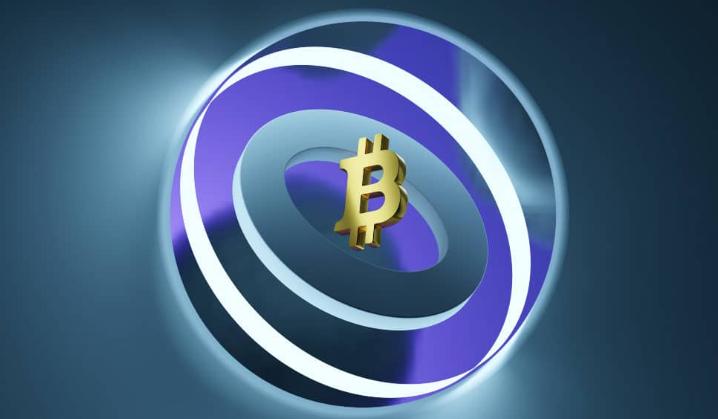Will Recursive Inscriptions Open Up the Bitcoin Metaverse? A Detailed Explanation of the New Interactive Inscriptions Gameplay
Author: Mia, ChainCatcher
As the popularity of the Bitcoin on-chain protocol Ordinals continues to rise, innovations based on the Ordinals protocol are emerging one after another, with more and more research and development teams and developers joining this innovative revolution.
Recently, there has been a new story in Bitcoin inscriptions. Raph, the new chief developer of the Bitcoin protocol Ordinals, recently merged the "recursive inscription" proposed by Casey Rodarmor, the creator of the Bitcoin protocol Ordinals, with the number 2167 into the Ordinals protocol on GitHub, officially launching recursion in version 0.6.2. The concept of recursive inscriptions was born. This is a new way of inscribing that has the characteristic of self-reference, allowing recursive inscriptions to request the content of other inscriptions using special syntax. In the previous inscription methods, each inscription was independent, with no connections between them. This expands the possibilities of inscriptions and greatly reduces the transaction fees.
Following this, the first interactive recursive experimental inscription "Recursive Playground" debuted at the top of the homepage of the Bitcoin inscription information platform Ord.io. By clicking on the inscription, users can interact with it using their mouse, experiencing something akin to a decompressing game. This means that inscription NFTs have evolved from being viewable only in a one-way manner to now allowing real-time two-way interaction through mouse movements.
From "static inscriptions" to "recursion" and then to "real-time interactive feedback," the narrative of the Bitcoin ecosystem is becoming more vibrant and imaginative. "Recursive inscriptions" may be becoming a new ecological trend, while "interactivity" will endow inscription NFTs with more new gameplay.
What are "recursive inscriptions"?
According to the interpretation of Ordinals' well-known KOL Leonidas, "recursive inscriptions" refer to a new way of inscribing on the blockchain that allows inscriptions to reference and call each other. It breaks the awkward situation where each inscription is independent and unconnected, opening up the possibility of free combinations through its combinable nature. In simple terms, a recursive inscription is one inscription requesting the content of another inscription.
By using the "recursive inscription" method, inscriptions can request the content of other inscriptions using the special "/-/content/:inscription_id" syntax, allowing users to create inscriptions on the Bitcoin chain with less code, thus reducing the cost and enabling more complex functionalities.
In this regard, Leonidas explained that instead of separately inscribing 10,000 JPEG files for a PFP collection (which would be very expensive), it is better to extract 200 features from the collection and then use the new inscription syntax to request these 200 features, combining them to create 10,000 inscriptions, with each inscription using only a small amount of code to request features and present images.
In fact, recursive inscriptions use special ID syntax to find corresponding elements that already exist on the chain and then combine them without needing to upload and store all the inscription content. This keeps the code size small, allowing the size of inscriptions to break through the 4MB limit of Bitcoin block size, significantly reducing costs and bringing more creativity to the Bitcoin chain.
Specifically, in the past, creating inscriptions for 10,000 PFP collections required uploading 10,000 different images, with varying clarity affecting the space occupied by the inscriptions. The higher the clarity, the higher the cost of inscribing the images on the chain. Now, with recursive inscriptions, only the key elements required for the PFP collection, such as patterns, characters, and accessories, need to be uploaded. The special ID syntax can call these elements, allowing the existing corresponding elements to be recombined and displayed as images without uploading the entire picture.
The first interactive recursive inscription: Recursive Playground

"Recursive Playground" is the first interactive recursive inscription NFT project. As demonstrated in its beta version, users only need to gently drag the mouse to change the state of the screen. This transforms inscription NFTs from static, view-only formats into dynamic, real-time interactive experiences, allowing collectors to become co-creators and create their own works based on this.
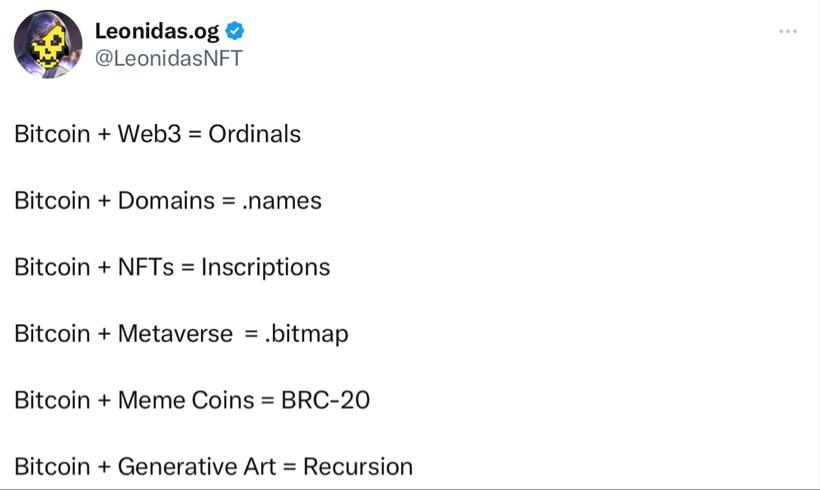
In "Recursive Playground," the unique artworks created in real-time through the collision of personal inspiration and computer interaction are what we call interactive art.
Currently, the "Recursive Playground" project team remains quite mysterious, not revealing the launch time, price, or total quantity of its related NFT products. The project team has only released an interactive NFT beta version and some photos.
Although the "Recursive Playground" beta version is merely the debut of "interactive recursive inscription" NFTs, its significance as a milestone in NFTs cannot be denied. This is not just an attempt at interaction; it is more a validation of possibilities. Our understanding of NFTs is no longer limited to a two-dimensional world; the three-dimensional attributes of NFTs have been validated.
Imagine if we try to change the reaction logic behind "Recursive Playground," extending the mouse click interactions to gravity systems, fluid mechanics, and even time logic. Wouldn't "interactive recursive inscription" NFTs then possess even more playability? NFTs would no longer be limited to conveying visual effects through screens; through mouse interactions, users could feel their existence more. A gentle touch of a finger could cause the NFT to ripple in response to pressure.
What possibilities will "interactive recursive inscriptions" bring to the Bitcoin ecological metaverse?
Let’s return to the interpretation of "recursive inscriptions." As Leonidas said, due to the properties of recursive inscriptions, "there will now be a vast software package repository for developers to build on," unlocking powerful use cases that could never be completed under 4MB. Just like complex software is compiled together from code, the software package repository built through recursive inscriptions could also completely host complex 3D video games on the Bitcoin chain. Bitcoin will essentially become an internal internet, where each file can request data from other files on Bitcoin, and perhaps in the near future, we can also enjoy pleasant surfing on the Bitcoin internet.
"Recursive inscriptions" empower NFTs to break through the 4MB limit of Bitcoin block size, while "interactive art" elevates NFTs from visual to tactile experiences. If "interactive recursive inscriptions" are extended to the metaverse or gaming fields, could we see the emergence of a growth-type NFT in the future?
Suppose we treat NFTs as electronic pets or game items. Through the inscriptions of recursive inscriptions, NFTs could select the elements they need from the inscription element library for upgrades. Just like characters in current online games that possess growth and upgrade attributes, this attribute could also apply to the metaverse and gaming fields. Moreover, with the infinite recursive properties of recursive inscriptions, theoretically, the element library could be compatible with any game or NFT in the Bitcoin ecosystem, making full-chain gaming possible. When your NFT or equipment can freely traverse any game in the Bitcoin ecosystem, the true Bitcoin ecological metaverse will unfold before your eyes.
What interactive recursive inscription projects are there?
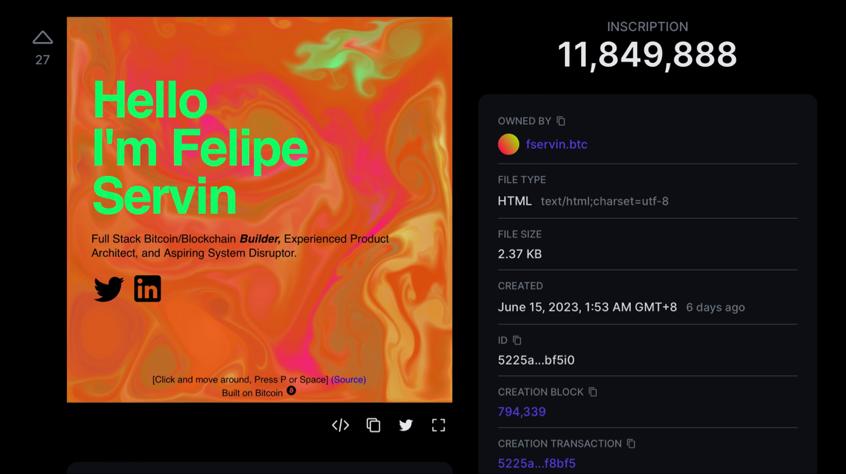
1. Fservin: Twitter @fservin
Utilizing basic attributes and a JS webGL fluid simulator to generate personal web pages. According to its NFT interactive experience test, users only need to drag the mouse, and the NFT can achieve various stunning light and shadow effects based on fluid mechanics and aerodynamics.
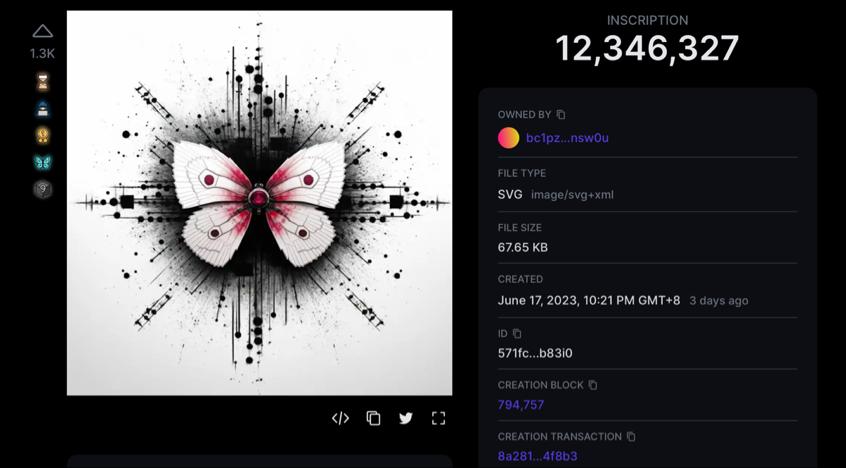
2. Speculum Aeternum Miraculum: Twitter @const_quary
Incorporating mathematical equations and variables of time (block height), the color of the butterfly changes with the increase in Bitcoin block height, achieving interaction between machines.
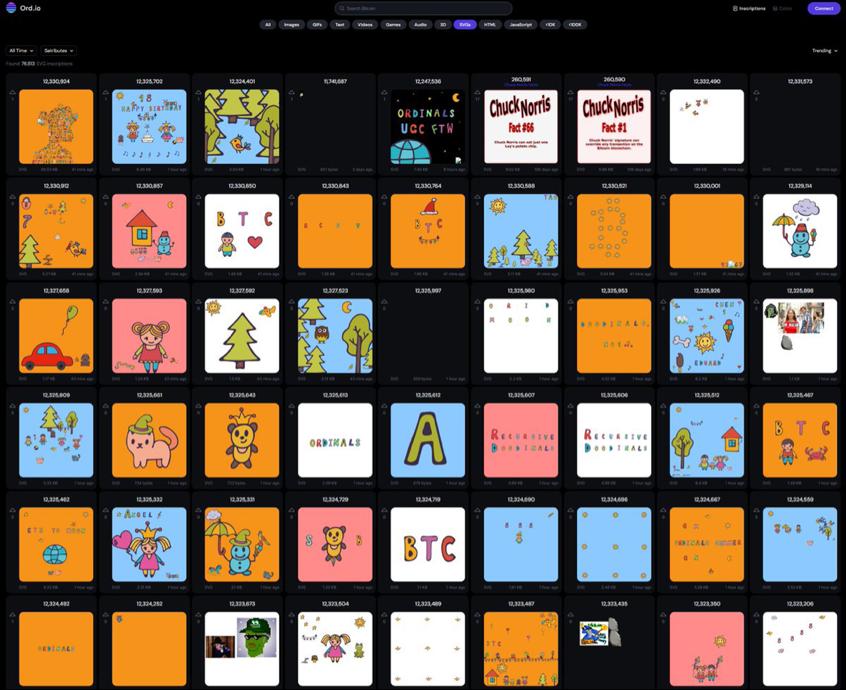
3. Recursive Doodinals: Twitter @rcsvio
The project provides basic attribute features for the NFT series, allowing players to DIY their own NFTs for inscription. According to the project’s official introduction, Doodinals is the first recursive art collection completely created by the community, where community players can DIY doodles on io, and all element features support positioning, scaling, and rotation functions. The DIY-generated SVG files will be inscribed on Ordinals, and every player’s doodle will have the chance to be included in the collection series. According to official data, over 128 avg files have been inscribed on Ordinals.
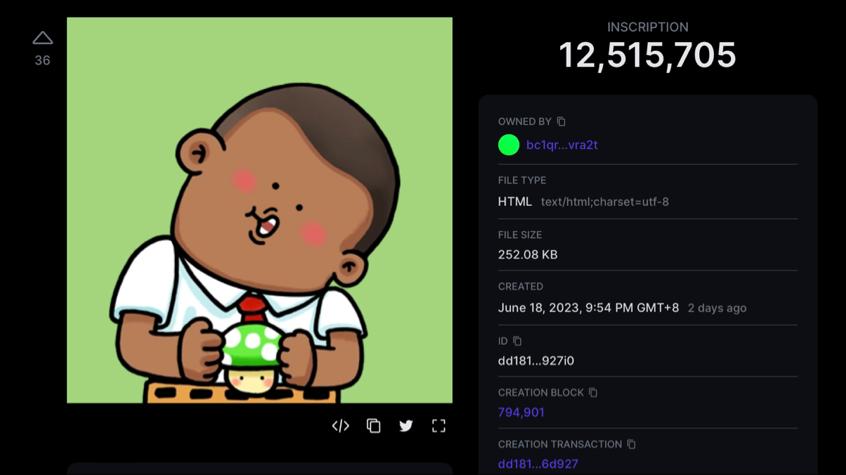
4. Vibeland: Twitter @vibelandwtf
The project is the first original 10K large collection series achieved through recursion, pioneering the random appearance of different PFP static HD images from a single inscription, realizing on-chain randomness. With each page refresh, a brand new avatar will appear, with up to 10,000 options available for random selection, which was completely impossible before recursive calls, and it also lays the groundwork for future blind boxes on Bitcoin.
Conclusion
As "Recursive Playground" illustrates, "Bitcoin is art, a canvas, or a computer." The emergence of interactive recursive inscriptions has broken the limitations of capacity and flatness for creators in the Bitcoin ecosystem, making the Bitcoin network a true creative paradise for users, where one can create unique SVGs, websites, and artworks with just a gentle touch of the mouse.
Users have transformed from simple collectors into creators, and the true metaverse requires the construction and creation of every metaverse user. Interactivity may provide another possibility for the realization of the future metaverse.
Currently, the first interactive recursive inscription has only been online for a few days, and this concept has just begun to catch people's attention. More and more interactive projects are brewing and developing. Every great technological revolution stems from people's pursuit of future technologies. Will interactive recursive inscriptions lead to a transformation in the Bitcoin ecosystem, or will they merely be a flash in the pan? We shall see.



